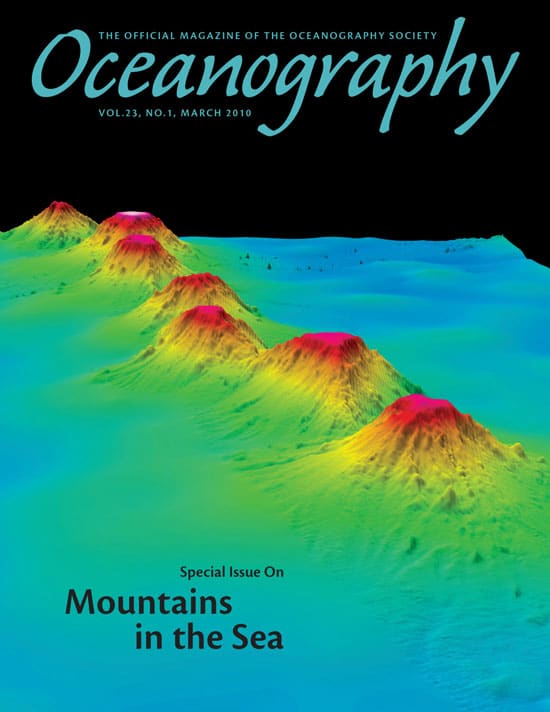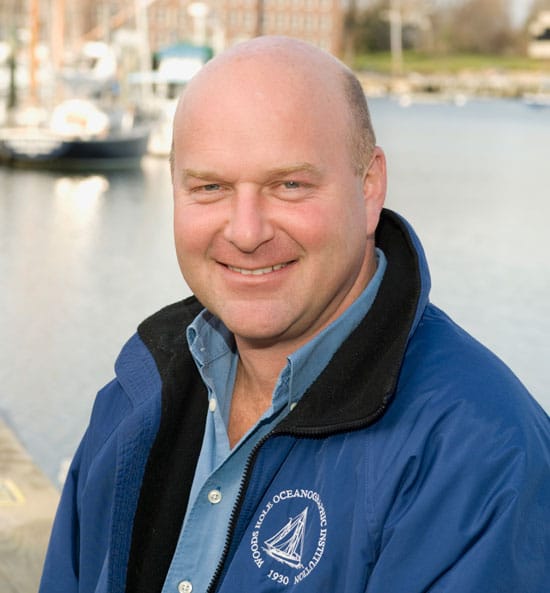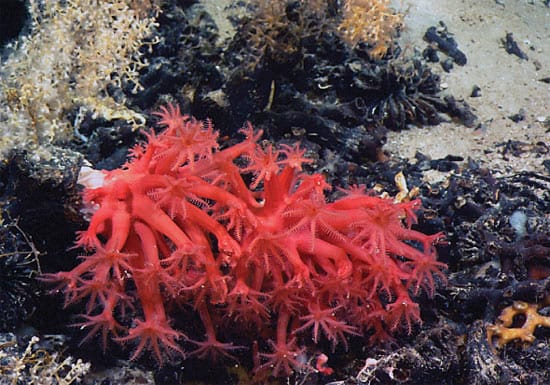WHOI contributes to special seamount issue of Oceanography magazine
February 22, 2010
Woods Hole Oceanographic Institution (WHOI) biologist Timothy M. Shank is among five guest editors of a newly published special edition of the research journal Oceanography on the oceans’ seamounts, submerged isolated mountains in the sea. Shank is also a contributor to the special Oceanography edition.
“This issue of Oceanography offers a broad perspective on seamount research of all major disciplines to raise awareness of the diversity of seamount research and to promote collaboration among seamount scientists,“ wrote the guest editors of the issue, which represents the most comprehensive volume of peer-reviewed research on the subject to date.
In addition to Shank, the guest editors include Hubert Staudigel of Scripps Institution of Oceanography at UC San Diego, Anthony A.P. Koppers of Oregon State University, J. William Lavelle of NOAA, and Tony J. Pitcher of University of British Columbia. Each contributed his expertise in seamount chemistry, physics, geology, hydrology, oceanography, biology and fisheries conservation to this interdisciplinary effort to delve into the broad research supported by seamounts and to communicate the science and threats facing them to the public.
“One of the key goals of this special issue was to bring together the extremely diverse seamount research community that ranges from fisheries science and conservation all the way to mantle geochemistry,” said Staudigel a research geologist at Cecil H. and Ida M. Green Institute of Geophysics and Planetary Physics at Scripps and the lead guest editor of the special issue. “In my eyes, this volume of Oceanography goes beyond that by presenting amazing new research in a way that the public can understand and get excited about.”
Seamounts are found throughout the global ocean. Many seamounts are extinct volcanoes that once erupted from seafloor vents, with lava flows building thousands of meters up from the seafloor. These underwater mountains host coral communities and provide diverse habitats for marine life, such as sponges, crabs, sea anemones, and commercially important fish.
Scientists are just beginning to investigate seamounts. They are interested in whether seamount species are endemic to particular seamounts or seamount chains and possibly evolving in isolation from other species. They are also examining relationships among corals and invertebrate species hosted by the corals. Other research is looking into questions about how seamount populations change in response to climate induced shifts in ocean circulation, and whether disturbed habitats can be repopulated by larval dispersal and genetic exchange.
Deep-sea coral communities and other species on seamounts are at risk from a particularly destructive fishing practice called “trawling.” Some trawl nets, which can weigh more than two tons, are big enough to carry six jumbo Boeing 747 airliners. The nets are weighted with metal balls or rollers to ensure that they rake up everything in their path, leaving a swath of destruction. Some countries have banned trawl fishing within their exclusive economic zones, but seamounts in international waters are harder to protect.
For example, the long-lived deepwater fish orange roughy, shows signs of habitat destruction and over exploitation from intense international fishing efforts.
“I was pleased to see how many of the contributions in this special issue deal with very practical and societally important issues,” said U.S. Geological Survey Director Marcia McNutt, who wrote the “Foreword” to this special edition.
This Oceanography issue is the result of the work of a National Science Foundation-funded biogeoscience research coordination network organized by the co-editors of the volume. This comprehensive synthesis will establish new collaborations between scientists while at the same time offer a unique educational opportunity for the public to learn about an important feature on Earth that remains vastly unexplored.
The online edition is free and available today, and the print edition will be available on March 10.
The Woods Hole Oceanographic Institution is a private, independent organization in Falmouth, Mass., dedicated to marine research, engineering, and higher education. Established in 1930 on a recommendation from the National Academy of Sciences, its primary mission is to understand the oceans and their interaction with the Earth as a whole, and to communicate a basic understanding of the oceans’ role in the changing global environment.



